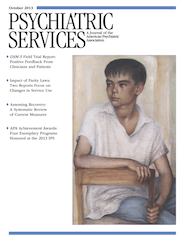Relational Suicide Assessment: Risks, Resources, and Possibilities for Safety
Douglas Flemons and Leonard M. Gralnik deserve recognition for Relational Suicide Assessment. The approach outlined in this book involves a thoughtful and thorough clinical assessment with an emphasis on an empathic and collaborative style that explores the importance of significant relationships in the individual’s life. As is noted by the authors, this approach, while useful for the purpose of guiding the suicide assessment process, has not been normed or validated and does not produce a quantifiable determination of suicide risk. However, its value is supported by this book, which addresses the foundations and therapeutic principles of relational suicide assessment and describes its application in clinical practice for the purpose of determining safety risk and identifying ways to promote safety.
Relational suicide assessment was conceived as a joint process between Flemons, a family therapist, and Gralnik, a psychiatrist. The concept of relational suicide assessment emerged in the context of training that the authors provided to staff at the student counseling center they directed. As in any good suicide assessment approach, Flemons and Gralnik stress the need for consideration of both risk factors and protective factors. The authors underscore the importance of taking into account both interpersonal and intrapersonal risks and resources for the individual, which unfortunately is too often neglected in a suicide risk assessment. Relational suicide assessment specifically considers the weight of the impact of the significant relationships in someone’s life on their safety risk. The authors provide guidance for this in their risk and resource guide, which is a template for conducting a semistructured assessment interview that examines four major areas of concern: disruptions and demands, suffering, troubling behaviors, and desperation. In addition, in chapter 4 the authors explore the importance of developing a comprehensive and collaborative safety plan; they also address the concerns about safety contracts.
This is a well organized and thoroughly referenced book. Flemons and Gralnik provide frequent examples throughout the book of how to apply the relational suicide assessment approach, presenting many case reports and vignettes with examples of therapeutic dialogue. Ultimately, the authors propose a thoughtful and well-rounded approach to suicide assessment while promoting awareness of the need for a collaborative and empathic process that fosters hope and safety within the individual. This book is a valuable read for all mental health professionals involved in suicide assessment.



